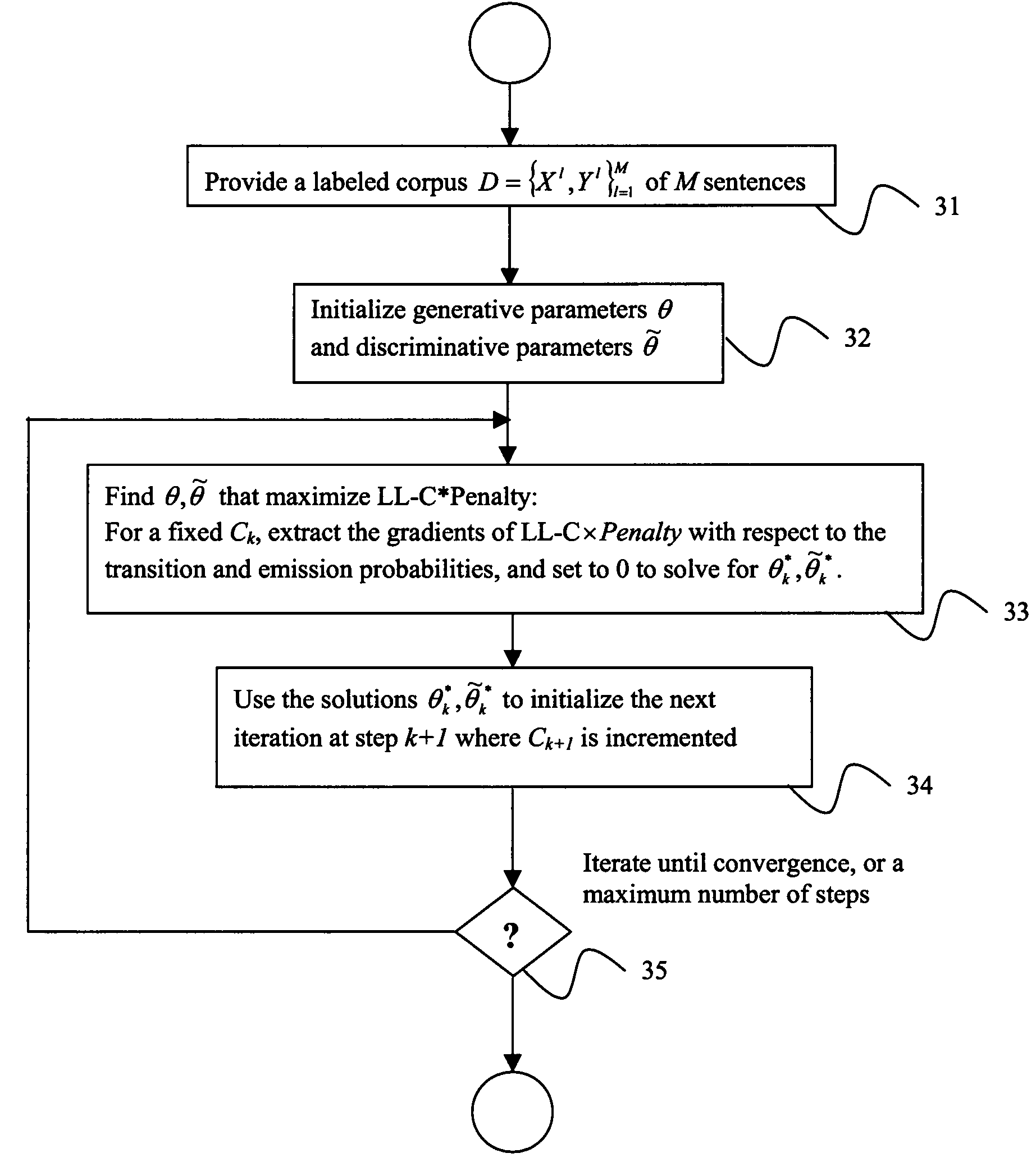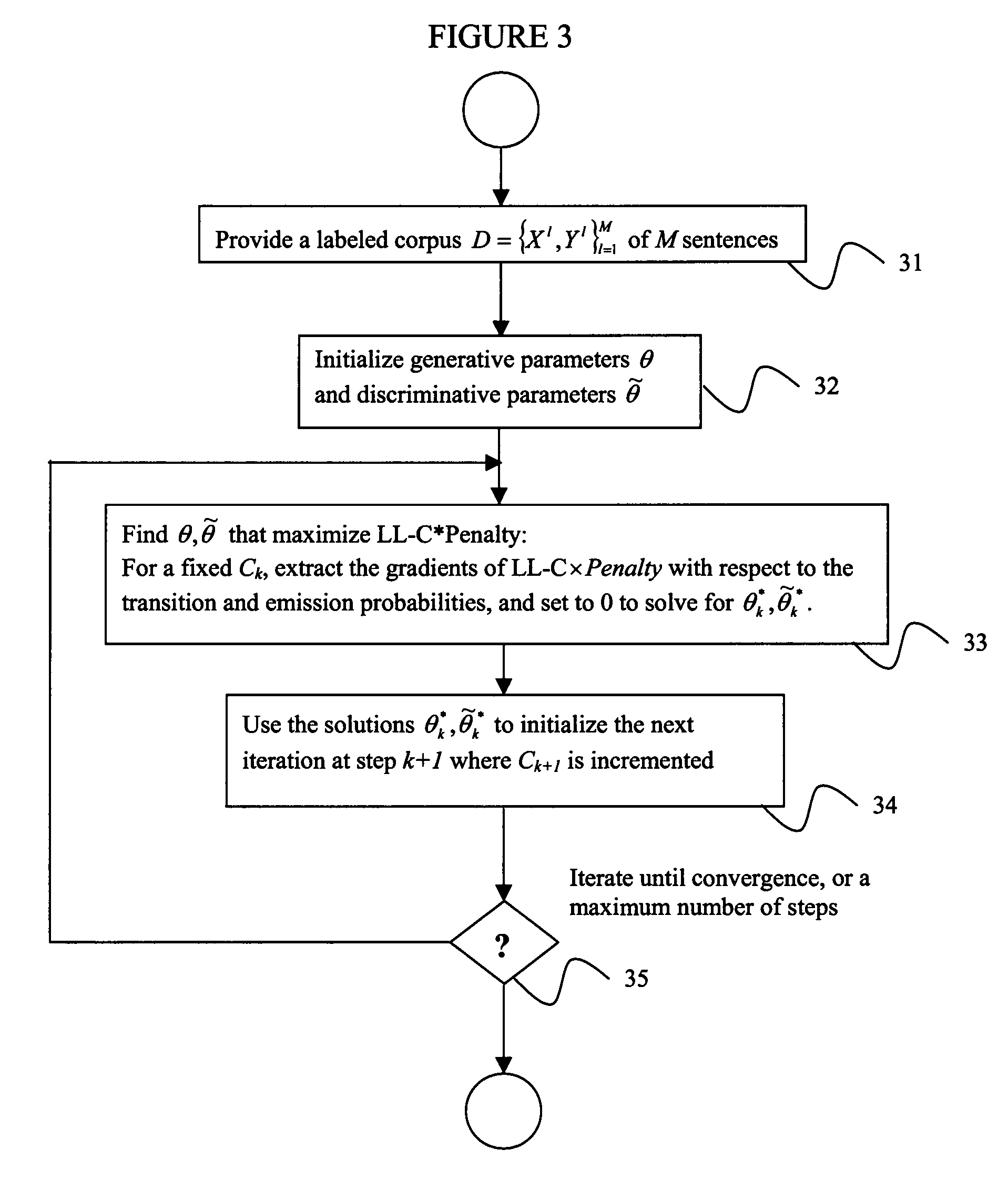System and Method for Text Tagging and Segmentation Using a Generative/Discriminative Hybrid Hidden Markov Model
- Summary
- Abstract
- Description
- Claims
- Application Information
AI Technical Summary
Benefits of technology
Problems solved by technology
Method used
Image
Examples
Embodiment Construction
[0027]Exemplary embodiments of the invention as described herein generally include systems and methods for sequence tagging using a hybrid hidden Markov model. Accordingly, while the invention is susceptible to various modifications and alternative forms, specific embodiments thereof are shown by way of example in the drawings and will herein be described in detail. It should be understood, however, that there is no intent to limit the invention to the particular forms disclosed, but on the contrary, the invention is to cover all modifications, equivalents, and alternatives falling within the spirit and scope of the invention.
Notation
[0028]Let D be a labeled corpus of M sentences. Let Xl be lth sentence of length Tl=length(Xl) where each word comes from a finite vocabulary VX. Sometimes the superscript l may be dropped to refer to an arbitrary sequence from D. Let xj be a word at position j of a sentence X. Let X be a set of all possible sentences. Each word xj has a label yj from a...
PUM
 Login to View More
Login to View More Abstract
Description
Claims
Application Information
 Login to View More
Login to View More - R&D
- Intellectual Property
- Life Sciences
- Materials
- Tech Scout
- Unparalleled Data Quality
- Higher Quality Content
- 60% Fewer Hallucinations
Browse by: Latest US Patents, China's latest patents, Technical Efficacy Thesaurus, Application Domain, Technology Topic, Popular Technical Reports.
© 2025 PatSnap. All rights reserved.Legal|Privacy policy|Modern Slavery Act Transparency Statement|Sitemap|About US| Contact US: help@patsnap.com



